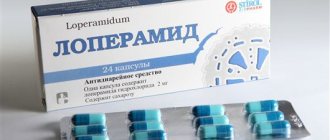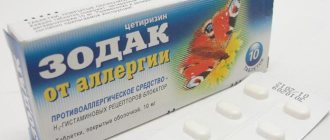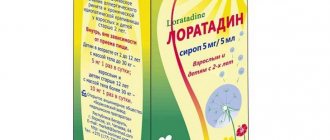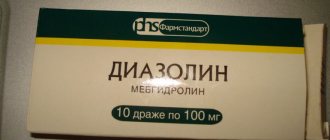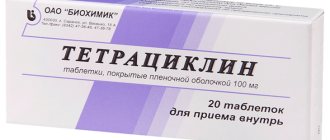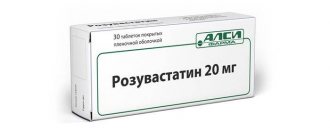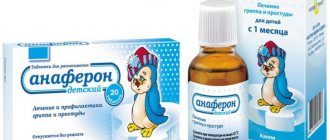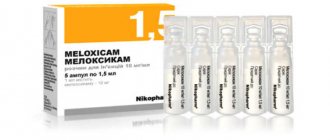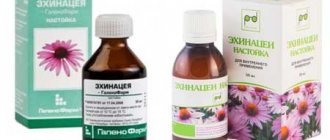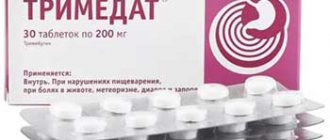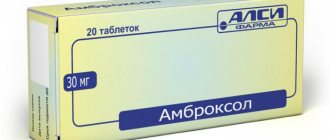It is not easy to treat a cough if the sputum has a viscous consistency and is difficult to expectorate. The child tries to clear the airways, but the cough reflex does not bring noticeable relief.
It happens that children literally choke from coughing, especially at night, which indicates stagnation of bronchial secretions.
This clinical picture is observed in various bronchopulmonary pathologies with viscous and difficult to separate sputum - bronchitis, pneumonia, cystic fibrosis. This is not a complete list of indications indicated for use of the drug Bromhexine in the instructions for use. Tablets for children have their own directions for use, and we will look at them in more detail.
Compound
Bromhexine is a monocomponent medicine. The active substance is represented by a chemical compound of the same name.
Interesting! The history of the discovery of the described drug is closely connected with a plant called Adhatoda vasica, which in folk medicine was used to relieve coughs and thin sputum. After research, the substance vasicin was obtained from this flower. Thanks to modern technologies, scientists have synthesized an analogue of the corresponding compound in the laboratory.
Bromhexine tablets have a fairly simple composition. In addition to the active ingredient, the medicine contains lactose, starch, povidone and magnesium stearate. Due to the minimum number of compounds in one preparation, rapid absorption of the drug is achieved with minimal risk of developing undesirable consequences and complications.
Composition and pharmacological action of tablets
The pharmacological basis of Bromhexine (tablets for children) is bromhexine hydrochloride (4 mg), the following additional ingredients are used:
- food additives-fillers – magnesium stearate, corn starch, povidone, etc.;
- milk sugar – lactose monohydrate.
This information in the instructions for use should be taken into account by parents whose children suffer from lactose intolerance or lactase enzyme deficiency.
Bromhexine belongs to the pharmacotherapeutic group of mucolytic (secretolytic) expectorants.
The action of Bromhexine is based on:
- improving the rheological properties of sputum (reducing its viscosity);
- activation of the ciliated epithelium;
- increased sputum production;
- improving its evacuation.
In addition, the medication has a weak antitussive effect.
Bromhexine, release form - tablets
You can buy the described medication in tablet form. One unit of cough medicine contains 8 mg (0.008 g) of the active substance. A standard cardboard package can hold 10-50 tablets, packaged in blisters. Sometimes pharmacies sell polymer jars with the same number of tablets inside, as well as instructions in the insert.
Analogs
If there are contraindications or the drug is not available in the pharmacy, Bromhexine can be replaced with analogues. These include:
- Ambrobene - tablets, syrup, solution for intravenous administration with ambroxol. Contraindicated during pregnancy, lactase intolerance.
- Libexin - tablets with prenoxdiazine. The antitussive is contraindicated in the presence of copious bronchial secretions.
- Lazolvan – mixture, tablets, capsules with ambroxol. The drug effectively eliminates cold symptoms and helps cope with cough.
- Ascoril - combined expectorant tablets. Not prescribed for tachyarrhythmia, myocarditis, glaucoma.
- ACC - syrup, bags of granules, effervescent tablets based on acetylcysteine. The drug has an expectorant and mucolytic effect. It is prescribed with caution for varicose veins and adrenal gland diseases.
- Flavamed is an oral solution and tablets based on ambroxol. The drug stimulates the production of bronchial mucus and improves sputum discharge. Contraindicated in case of fructose intolerance.
- Fluditec is a syrup based on carbocisteine. Can be used to treat cough in children over 2 years of age.
Indications for use and contraindications
The use of the described medicine is justified in the treatment of diseases of the respiratory system, which are accompanied by dysfunction of the internal epithelium of the bronchi. Due to the dysfunction of this structure, thick mucus accumulates inside the respiratory tract. The described medication helps to liquefy sputum with its further elimination.
Indications:
- asthma;
- cystic fibrosis;
- tuberculous lesions of lung tissue;
- various forms of pneumonia;
- bronchitis with the presence of an obstructive factor or retraction of the trachea;
- bronchiectasis;
- emphysematous degeneration of the pulmonary parenchyma;
- occupational diseases (pneumoconiosis).
The drug should be taken primarily for wet coughs. The medication directly affects the structure of the mucus itself, making it less thick. Additionally, the drug increases the production of the liquid fraction by individual cells of the ciliated epithelium. Studies have proven that the tablets have little antitussive properties. Therefore, the medication can theoretically be used for laryngitis, pharyngitis, and tracheitis. However, the medicine will be of little help with a dry cough.
Contraindications:
- intolerance by the body to one of the components of the drug;
- pregnancy and lactation;
- age up to three years;
The cough medicine is prescribed with caution to patients with impaired liver and kidney function. These organs are responsible for removing metabolites from the patient’s body. When they are damaged, drug metabolism products remain in the body, negatively affecting the patient’s well-being. It is also not recommended to prescribe the medicine to patients with severe hormonal disorders.
Indications
Tablets with a mucolytic effect Bromhexine are indicated for bronchial and pulmonary pathologies with difficult sputum discharge according to the instructions for use:
- with cystic fibrosis;
- acute and chronic pneumonia;
- emphysema;
- pneumoconiosis;
- pulmonary tuberculosis;
- bronchitis, tracheobronchitis;
- bronchial asthma.
Bromhexine for children in tablets is also used for the purpose of sanitation (health cleansing) of the respiratory system before surgery or intrabronchial diagnostics.
Instructions for use of Bromhexine (method and dosage)
The instructions for Bromhexine tablets provide for internal use, regardless of food intake. The drug has virtually no effect on the secretion of gastric juice, which increases the safety of therapy.
Depending on the complexity of the clinical case, a cough medicine can be prescribed for a period of 4 to 28 days. Before taking Bromhexine tablets, you should consult your doctor. After a comprehensive examination, the doctor will be able to correctly assess how much active substance a particular patient needs.
Features of use depending on the age category of patients will be described below.
Bromhexine tablets - instructions for use - DOWNLOAD
For children
Bromhexine tablets for children can only be prescribed from the age of three. The reason for the impossibility of earlier use of the drug is the lack of specialized studies of therapy for the corresponding group of patients. Small children may additionally choke on the pill with progression of undesirable consequences.
Dosage of cough tablets:
- 2-5 years – 1 tablet per day. It is recommended to divide the medication into smaller pieces to prevent a one-time overdose;
- 6-14 years – half or a whole tablet 3 times every 24 hours.
To achieve optimal results from using Bromhexine tablets, children need to drink it 3-4 times a day. To enhance the mucolytic effect, it is recommended to drink large amounts of water (up to 2 liters per day).
A feature of the described medication remains the ability to enhance the synthesis of surfactant - a bioactive substance that does not allow the lungs to collapse during exhalation. However, this property is weakly expressed and is rarely used for therapeutic purposes.
Interesting! A derivative of Bromhexine is ambroxol hydrochloride. This substance is superior to the original raw materials, which determines its widespread use in therapeutic practice.
For adults
The principles of using Bromhexine tablets for adults do not differ from those for children. Only the single dose changes. Adult patients should take 1-2 tablets three or four times a day.
Bromhexine during pregnancy and lactation
The use of Bromhexine during pregnancy is prohibited only in the first trimester. This is due to the potentially negative effects of the active substance on the developing fetus. At a later date, treatment of cough with the help of appropriate medication is possible only after a comprehensive examination of the woman with an assessment of the expected therapeutic result.
Bromhexine enters the child's body with milk, so its use is contraindicated during lactation. To prevent consequences, you need to use drugs without a negative effect on the child.
Contraindications
As the instructions for use indicate, Bromhexine cough tablets have virtually no restrictions for use. The drug is well accepted by the body and does not provoke the development of adverse reactions. However, experts identify a number of conditions in which you should stop taking the drug:
- First trimester of pregnancy. During this period, the formation of all vital organs and systems of the unborn child begins. "Bromhexine" enters the bloodstream and is capable of having a teratogenic effect on the developing organism. In particular, taking the drug at the beginning of pregnancy can negatively affect the fetal respiratory system.
- Peptic ulcer disease. The components of Bromhexine can increase the acidity of juice in the stomach. For this reason, if you are prone to the formation of ulcers in the stomach, as well as inflammatory processes in the organs of the digestive system, it is not recommended to take the drug. Taking medication during an exacerbation of a gastric ulcer can lead to serious complications for the patient’s health and will require hospitalization.
- Allergic reaction. The tendency to develop allergies to the components in Bromhexine is also a contraindication for taking tablets. A negative reaction to the drug can manifest itself in the form of itching on the skin, hives, rash in the abdomen and chest, as well as on the neck and arms. In particularly severe forms of the disease, bronchospasms and swelling of the mucous membrane are possible.
- Breast-feeding. It is not recommended to breastfeed your baby at the same time as treatment with Bromhexine. This is due to the ability of the active components of the drug to penetrate into mother’s milk and be passed on to the child. The newborn's body's reaction can be unpredictable, including severe allergies.
- Bleeding in the stomach. In some people, weakness of the capillary vessels in the stomach is congenital. In this case, patients experience periodic bleeding in the cavity of the digestive organs. "Bromhexine" can provoke an increase in the intensity of blood secretion. This manifestation can dramatically reduce the pressure in the arteries and lead to the need for surgery to eliminate bleeding.
The doctor examines the patient to identify contraindications for using the drug.
Excess of dosage and negative reactions
The cough medicine described is safe for the body. Cases of adverse reactions are recorded in less than 5-6% of cases. Undesirable consequences traditionally appear in patients who use Bromhexine for more than 20 days, which is due to the accumulation of drug metabolites in the body.
Possible adverse reactions:
- change in taste sensations;
- nausea, vomiting;
- allergies such as itching or skin rash.
Laboratory analysis may indicate an increase in the concentration of transaminases in the blood. An overdose is theoretically accompanied by a worsening of these symptoms. If one of the symptoms occurs, you should stop taking the pills and consult your doctor about a possible change in therapeutic tactics.
Characteristics
The drug contains an active substance of the same name. The auxiliary components include levomenthol, sorbitol, hydrochloric acid (to adjust pH), methyl parahydroxybenzoate (preservative), ethyl alcohol and purified water. Thus, a dosage form is obtained - an oral solution, which many also call syrup. It is a colorless and transparent liquid with a specific taste.
Action
Bromhexine is an expectorant drug. It has a mucolytic effect, breaking the polymer bonds between proteins and polysaccharides of sputum, as well as increasing the content of the serous component. This leads to a decrease in viscosity and improved fluidity of the secretion. Additionally, the medicinal substance stimulates the ciliated epithelium, which has a beneficial effect on sputum discharge. And by freeing up the respiratory tract, it is possible to weaken the cough reflex and improve the condition of patients.
Distribution in the body
The drug after oral administration is almost completely absorbed through the digestive tract. However, the bioavailability of the drug is at a fairly low level, which is explained by the effect of primary passage through the liver and the individual characteristics of the body. In the blood, Bromhexine binds to proteins, in which it is transported to tissues and passes through natural barriers. Plasma concentration peaks after 60 minutes, and the half-life is up to 15 hours. The drug is excreted from the body mainly by the kidneys. Long-term use of the drug is accompanied by its cumulation (accumulation) in tissues.
Interaction with other drugs
Bromhexine is a universal remedy that demonstrates compatibility with other cough syrups and tablets. The medication enhances the effect of antibiotics, increasing their concentration in sputum, which contributes to the rapid destruction of pathogenic microorganisms.
The combination of the described medication with antitussive drugs that suppress the reflex at the central level remains contraindicated. Due to the formation of a large amount of liquid mucus, blocking coughing is fraught with stagnation of sputum with progression of inflammation. If signs of infection of the bronchial secretions occur, antibiotics are additionally prescribed.
In what cases is it recommended to take Bromhexine?
The drug taken orally has a pronounced secretolytic and secretomotor effect on the mucous membrane of the bronchial tract. Accordingly, as a result of the implementation of this effect, the intensity of bronchial secretion increases significantly, the viscosity of mucus (sputum) decreases and the activity of the cilia of the ciliated epithelium increases. All these factors together contribute to the acceleration of the movement of mucus (phlegm) through the respiratory tract.
Please note that Bromhexine is effective only for dry cough. Accordingly, it makes sense to use it (like all other mucolytics) in the initial stage of the disease. If the patient is already expelling large quantities of sputum, then there is no point in enhancing the mucociliary effect - with a high probability this can lead to the syndrome of “flooding” the bronchial tree with sputum, and will worsen the patient’s condition.
Pathologies (diseases) for which it is recommended to take bromhexine include infections of the upper, lower and middle parts of the respiratory tract (bronchitis, laryngitis, pneumonia). Please note that even with the mildest viral infection, Bromhexine is used only in complex therapy, because it does not directly affect the microorganism that caused the disease. This drug only alleviates the patient’s condition by helping to remove phlegm.
Analogues and Price
Bromhexine is a cheap cough medicine available to everyone. The average price per package ranges from 20-50 rubles, depending on the number of tablets inside. If the effectiveness is insufficient, you can use Bromhexine analogues:
- ACC;
- Ambrobene;
- Lazolvan;
- Gedelix;
- Gerbion and others.
The choice of a specific substitute is best done after talking with a doctor. The doctor will tell you which remedy is suitable for the patient under the current circumstances.
What cough does it help with?
Bromhexine is primarily a wet cough syrup. The product is aimed at liquefying and removing phlegm. 2-5 days after the start of its use, clots are completely removed from the bronchi, and the cough stops. In some patients, the duration of therapy is longer.
The medication can also help with dry cough. Eucalyptus oil helps fight irritation of the mucous membranes of the throat, reducing the frequency of coughing. However, if the patient suffers from a severe, prolonged dry cough, it is recommended to purchase a narrowly targeted medication rather than use Bromhexine.
The syrup is also prescribed for mixed coughs, when sputum formed deep in the bronchi is accompanied by a dry cough. It should be noted that the medication does not fight viral or infectious diseases that provoke the development of cough. It only eliminates the symptoms of the disease. To completely eliminate cough, it is recommended to use syrup as part of complex therapy, along with immunomodulatory and antiviral drugs.
Reviews of Bromhexine
There are active discussions on the effectiveness of Bromhexine on various forums and specialized Internet platforms. Patients who used cough medicine were divided mainly into two camps - those who recommend the tablets to everyone and those who are neutral about the drug. It is difficult to find negative reviews, given the safety and effectiveness of the product.
Below are some of the reviews from people who have used Bromhexine.
Arthur, 36 years old: “Bromhexine was prescribed to me by my local physician. I can’t say that the pills helped immediately, but after a week the cough disappeared and I began to feel better. True, at the same time I was treated with folk remedies, which also work well to cough up phlegm.”
Olga, 25 years old: “I take Bromhexine on the advice of my sister, who works as a doctor in another city. Cool pills. Already on the 3rd day the cough subsided. I think I’ll drink for another 3-4 days and that’s it. I recommend!".
Igor, 40 years old: “Bromhexine is a good remedy. I am a doctor myself and sometimes receive treatment from him. However, the drug is already a little outdated. There are more effective analogues, although more expensive. If you want to save money and have simple bronchitis, you can safely use it.”
Reviews are the subjective thoughts of other people. In order to choose the optimal treatment, it is better to first consult with your doctor.
Review Reviews
The assessments of parents who used Bromhexine for children are far from unambiguous and provide plenty of food for thought. Let's analyze the most frequent reviews of Bromhexine tablets for children.
Most mothers are confused by the “discrepancy between medical prescriptions and instructions for use.” So, some of them read that the tablets are contraindicated for children under 6 years of age, and apparently did not read the note that this instruction applies to tablets in a dosage of 8 mg, so they are afraid to give the tablets to 3-year-old children.
A small group of parents confirmed a positive result of Bromhexine treatment for cough with difficult sputum. But they emphasize that German-made tablets are most effective.
There are parents who are sure that young children (under 6 years old) should not be given expectorant medicine at all, since its effect is associated with an increase in the volume of sputum, and for the respiratory system of children this can be an unbearable burden. Such parents believe that it is better to limit themselves to drinking plenty of fluids, moisturizing and frequently ventilating the air in the nursery.
Bromhexine overdose
There are no overdoses of the drug that are dangerous to human life. The following signs of intoxication may appear:
- vomit;
- diarrhea;
- nausea.
Therapy consists of artificially inducing vomiting and gastric lavage in the first two hours after an overdose. If the time limit is exceeded, additional resuscitation measures help.
The use of Bromhexine Berlin Chemie leads to effective medicinal effects, expressed in the elimination of symptoms. Patients and doctors note its positive effect on the healing process; after a short period of time, the patient stops coughing. Use strictly according to a specialist’s prescription, as it has an extensive list of contraindications and side effects.
The drug "Bromhexine" for children: a brief description
The instructions describe this product as a powerful mucolytic medicine that has an amazing therapeutic effect.
The drug has an antitussive and expectorant effect. You can purchase Bromhexine at the pharmacy without a special prescription. Its price is approximately 71 rubles. for 1 bottle (100 ml).
The instructions for the above medicine advise storing it at normal room temperature. It should be kept in a dry and dark place, away from children. The drug should not be used after the expiration of its period of use, which is about three years.
Contraindications and side effects
The medicine should not be taken to treat coughing attacks in the following conditions:
- Individual intolerance to some components of the drug. Otherwise, there is a risk of redness on the skin, rash, and itching.
- Stomach ulcer.
- First trimester of pregnancy and breastfeeding. Medicine can be prescribed during these periods, but only if the risk is justified.
It is not recommended to give Bromhexine to infants who do not yet know how to cough up mucus.
Medicine in the form of drops is prescribed only to children over 12 years of age, as they contain ethanol. If kidney problems and liver pathologies are diagnosed, the medication is prescribed in a reduced dosage or a long interval is maintained between doses.
Bromhexine should not be taken together with medications containing codeine, as this makes it difficult to cough up mucus. There is no positive effect from this treatment, the cough gets worse, but the mucus does not come out completely.
During the treatment of cough with Bromhexine, it is important to maintain a drinking regime in order to maintain the secretolytic effect of the drug.
Side effects after a therapeutic course include:
- headache and rare dizziness;
- severe sweating, body rash, angioedema;
- bronchospasms;
- nausea, occasionally with vomiting.
If such symptoms are observed, the doctor discontinues the drug or reduces the dosage.
Overdose
When taking overdoses, confusion, bleeding in the gastrointestinal tract, peptic ulcers, and retroperitoneal fibrosis may occur quite rarely.
When daily doses are increased to 0.5-1 g, dizziness and hallucinations may occur. If you start taking drugs at dosages of 40-100 mg per day, the risk of a heart attack increases.
If you experience the symptoms described above, you should immediately stop taking Bromocriptine and seek medical help. Experts will tell you which drugs are best to use for symptomatic treatment.
How the medicine works
The drug is a transparent, viscous, colorless liquid. It has a bitter-sweet taste and a pleasant smell. Bromhexine Berlin Chemie cough syrup, the instructions for which are no different from syrup containing the same active substance, but produced by a different manufacturer, contains bromhexine hydrochloride.
Many pharmaceutical companies produce inexpensive syrups with this active substance, which help to quickly remove accumulated viscous mucus from the bronchi. Additional components are often introduced into their composition, which allows manufacturers to declare the originality of the product released onto the pharmaceutical market.
The drug helps to normalize the functioning of the bronchi, which changes under the influence of pathogenic microflora that enters the internal respiratory system. The active substance works effectively in chronic pathologies associated with disruption of this mechanism. The use of syrup in the treatment of colds helps to quickly restore the properties of sputum and improve the drainage function of the bronchi. The syrup has a weak antitussive effect.
After taking a single dose, bromhexine is quickly absorbed into the blood plasma, binds tightly to proteins, penetrating through all barriers. It is excreted from the body by the kidneys and, with prolonged use, accumulates in cells. In order for the active substance to work effectively, the patient must be provided with a normal drinking regime.
Important! A feature of the syrup is its delayed effect on the body.
The response to the active substance does not appear immediately. On the third day after the start of treatment, the functioning of the mechanism that helps remove mucus from the airways, which fails during acute respiratory diseases, improves. After relieving the cough, the drug is taken for another 3 days and discontinued, switching to expectorants of herbal origin.
Bromhexine cough syrup, recommended for children and adults, has positive reviews. It can be used for several months if the doctor considers it necessary. The syrup is non-toxic and is combined with antibiotics and essential oils of medicinal herbs used to calm coughs.
Like any medicine, it has a number of contraindications. The active drug has side effects that occur very rarely in patients with weakened immune systems.
Mechanism of action of the drug
After the taken drug enters the gastrointestinal tract, it begins to penetrate into the blood and completely spread throughout the human body. After two hours, maximum concentration of the drug occurs in the circulatory system - the first mildly expressed effect appears. Maximum effectiveness is felt approximately on the fourth day of Bromhexine therapy.
Bromhexine Berlin Hemi
Has expectorant properties. However, the metabolites that are part of it affect not only viscous sputum, but also the cells of which it consists. Since the medication does not have the ability to act selectively, other cells of the mucous membranes of the body also fall under its action. This process produces side effects in a similar manner.
Bromhexine allows alveolocytes to mature at a high rate. Alveolocytes are cells that are located in the lungs, in the alveoli, and produce a secretion important for life - surfactant. This fluid allows the lungs to absorb oxygen.
special instructions
Treatment with Bromhexine should be carried out under the strict supervision of a physician in those patients who have a history of gastric bleeding or ulcers. Patients with bronchial asthma should take the drug with extreme caution.
During pregnancy and lactation
The active substance of the drug penetrates the placental barrier and into breast milk. It should not be used by women during pregnancy and breastfeeding. If you cannot do without medication during lactation, then breastfeeding will have to be stopped.
For children
For such patients, the therapeutic course must be combined with postural drainage or vibration massage of the chest. This will facilitate the release of secretions from the bronchi.
Side effects
In accordance with the instructions for use, Bromhexine syrup for children may cause side effects. They can manifest themselves in the form of an allergic reaction: skin rashes that can itch and cause a burning sensation, increased sweating, redness of certain areas of the body, difficulty breathing. Less commonly, the central nervous system is affected. The patient may experience dizziness, weakness, drowsiness, and pain in different parts of the head. The respiratory system can also be damaged if the drug is used incorrectly: you may experience pulmonary spasm and a strong dry cough.
If you notice these or other symptoms after using the drug, you should stop taking it and consult a doctor. Depending on the symptom, you can visit a therapist or immediately call an ambulance. The specialist will prescribe symptomatic therapy and replace the medication.
It is possible that the side effects are caused by expired medicine. To keep Bromhexine syrup normal and to use the medicine for a long time, you must comply with the storage conditions. Storage at room temperature is allowed if it does not exceed 25 °C. The place should be protected from moisture and direct sunlight. Check the packaging at the pharmacy; it must not have been opened or damaged. Otherwise, request a replacement drug upon presentation of the receipt.
If you see that the expiration date indicated on the package has expired, you need to throw away the medicine, because it can cause poisoning. When properly stored, the properties of the medicine are preserved for 5 years.
It is important to ensure that the drug is inaccessible to children and pets. If a pet or small child does drink the syrup, you should immediately contact a veterinarian or call an ambulance.
Action of Bromhexine
Bromhexine belongs to the group of mucolytic drugs and promotes the onset of a pronounced expectorant effect. Used for bronchitis, various forms of pneumonia, bronchial asthma. Its use is indicated for upper respiratory tract infections. It is a component of complex therapy for tuberculosis and other pathologies in the lung structure. Its use is recommended for any diseases characterized by the formation of thick, viscous sputum.
When taking bromhexine in syrup form, almost 100% absorption of the active substance into the blood occurs. The optimal concentration is achieved within half an hour after consumption. The half-life begins an hour after administration and lasts 15 hours. Decomposition products are excreted together with urine.
Bromhexine price
| Release form | Volume | Manufacturer | Price, rubles |
| pills | 8 mg, 50 pcs. | Biosynthesis | 21 |
| pills | 8 mg, 20 pcs. | Pharmstandard | 34–38 |
| pills | 8 mg, 28 pcs. | PFC update | 70–77 |
| solution | 0.8 mg, 100 ml | Takeda GmbH | 179 |
| apricot flavored mixture | 100 ml | Pharmstandard | 111–136 |
| potion | 60 ml | Berlin-Chemie | 196–212 |
